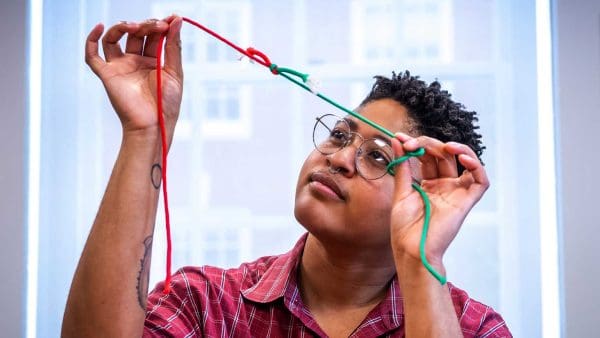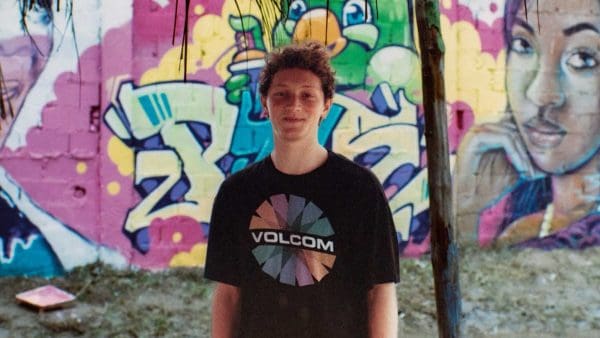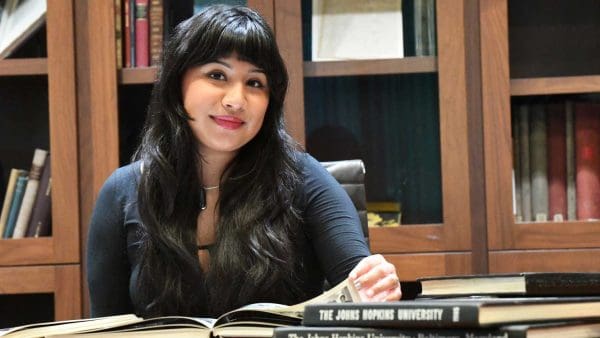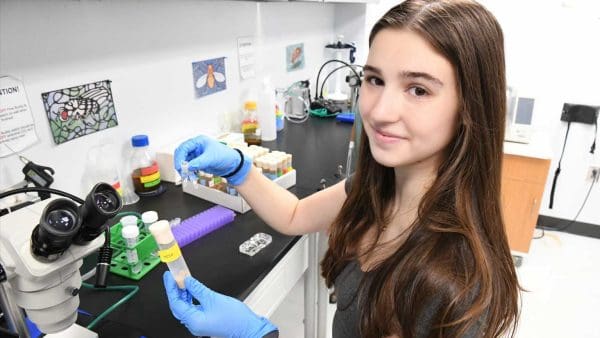Lily Newman ’12 would be the first to explain that she “was ridiculously gung-ho about [writing a] thesis.” The joint history of science and Writing Seminars major was certain she wanted to create a project that explored the topic of e-waste (used and outdated electronic products like televisions, computers, and VCRs, for example) and its environmental impact, and that she would utilize Johns Hopkins resources for the majority of her research. She was also thrilled when Professor Stuart “Bill” Leslie, in whose spring 2012 graduate seminar she held her own as the only undergraduate and whom she characterizes as “an amazing Hopkins personality,” volunteered to be her thesis adviser.
But when she and Leslie met to discuss her project, they realized that while a paper on e-waste was doable, it wasn’t necessarily an ideal topic given Hopkins’ resources. Instead, the two brainstormed a topic that combined Newman’s interests with Hopkins’ research strengths. “Dr. Leslie said, ‘I like the idea of waste or trash,’” Newman explains. “He said, ‘What’s Johns Hopkins known for? Medicine.’”
“All of a sudden it [the topic] just appeared before me,” says Newman.
Newman’s project, funded by the Owen Hannaway Undergraduate Research Award in the history of science department (one of the Dean’s Undergraduate Research Awards), examines the history of medical waste, how medical waste has been defined in Western culture, how that definition has changed over time, and what has happened historically to human waste—from hair cuttings to severed limbs.
“In addition to being really interesting, the topic was funny,” admits Newman. “I was writing about snot and all these gross topics.”
Newman ended up taking a broader historical view than she had originally intended when she found an abundance of primary sources but few secondary ones. As a result, she says, her thesis begins with a discussion of ritual and religious cleansing (which often involved bodily functions) in biblical texts and moves through 19th-century public health issues such as ether control. One example Newman cites is from the book of Leviticus, which describes a ritual blood cleansing required for women after they have given birth.
“Systems for dealing with and disposing of medical waste remained largely underdeveloped throughout Western history because societies were reluctant to acknowledge or discuss many of the conditions that produced the waste,” says Newman.
She also examined 19th-century health priorities. A waste management pamphlet on trash collection in London, for example, made a specific reference to human bones as a valuable raw material in manufacturing rather than a potential public health hazard.
“Disposal methods for medical waste barely evolved, even as medical practice became centralized and systematized,” Newman says. “It was only in the mid-20th century that waste disposal became an intellectual priority as opposed to a distasteful imperative.”
Funds from her research award allowed her to travel to Cornell University and George Washington University to hunt down primary documents. Newman says that she was “totally blown away by the Sheridan library system right here at Johns Hopkins and the sources I was able to access.”
“Hopkins’ Welch library was really where I found more than half my sources,” says Newman, who concedes her bibliography is “enormous” compared to the length of her thesis. “I could walk in and walk out with 20 sources, including lots of weird sources I’d have to have them pull out of storage for me.”
“Lily made good use of the award,” says her adviser, Bill Leslie, who refers to his role in the project as “interested cheerleader.” “She went from being a journalist to being a historian and grew a lot,” he explains. The thesis “pushed her to use her skills as a historian and that made it a much more interesting project, [not about] what happened yesterday but what happened over the last millennium.”
“This was my greatest intellectual challenge at Hopkins,” says Newman, who recently started New York University’s Science, Health and Environmental Reporting Program to train as a science journalist.




